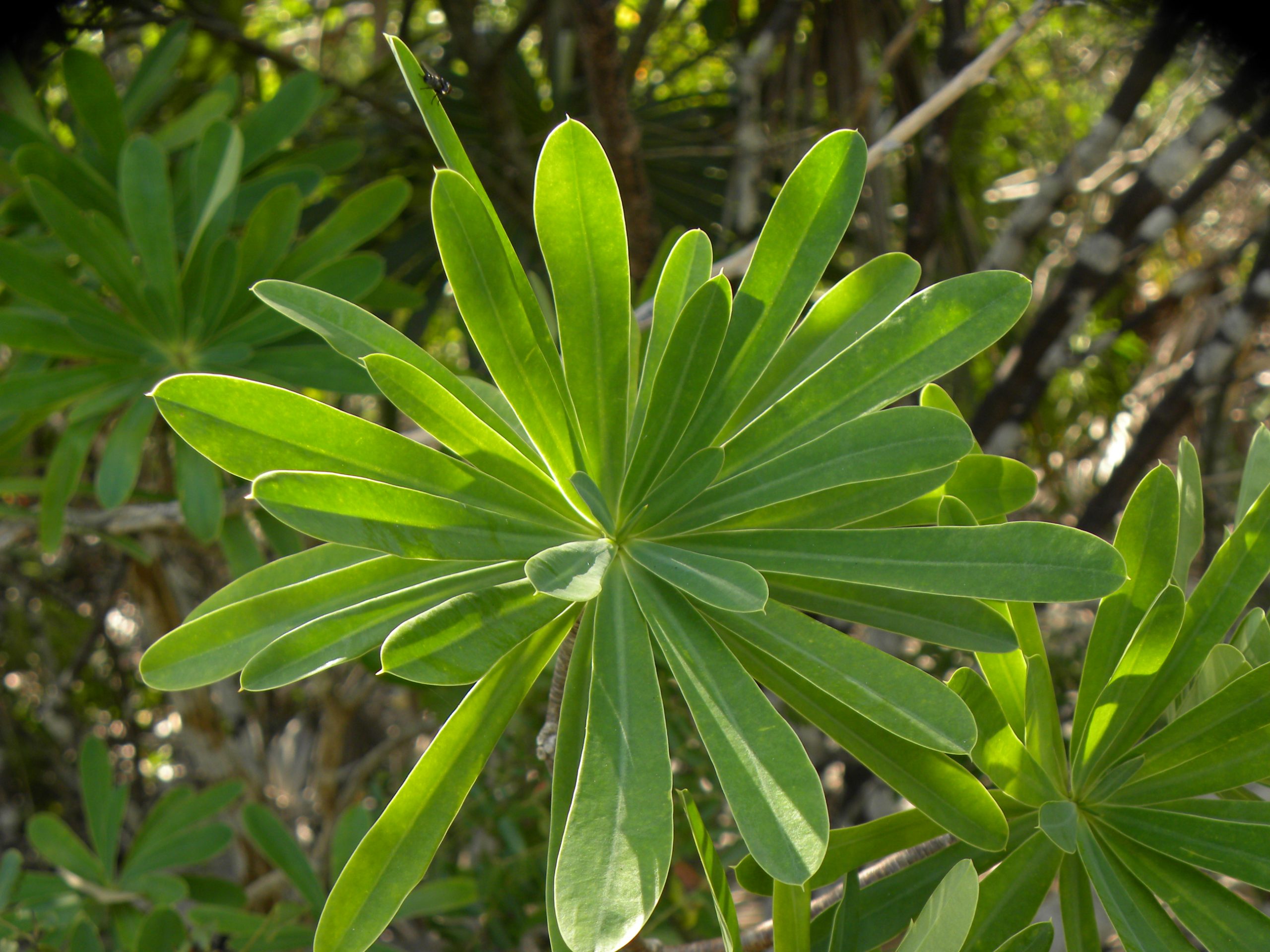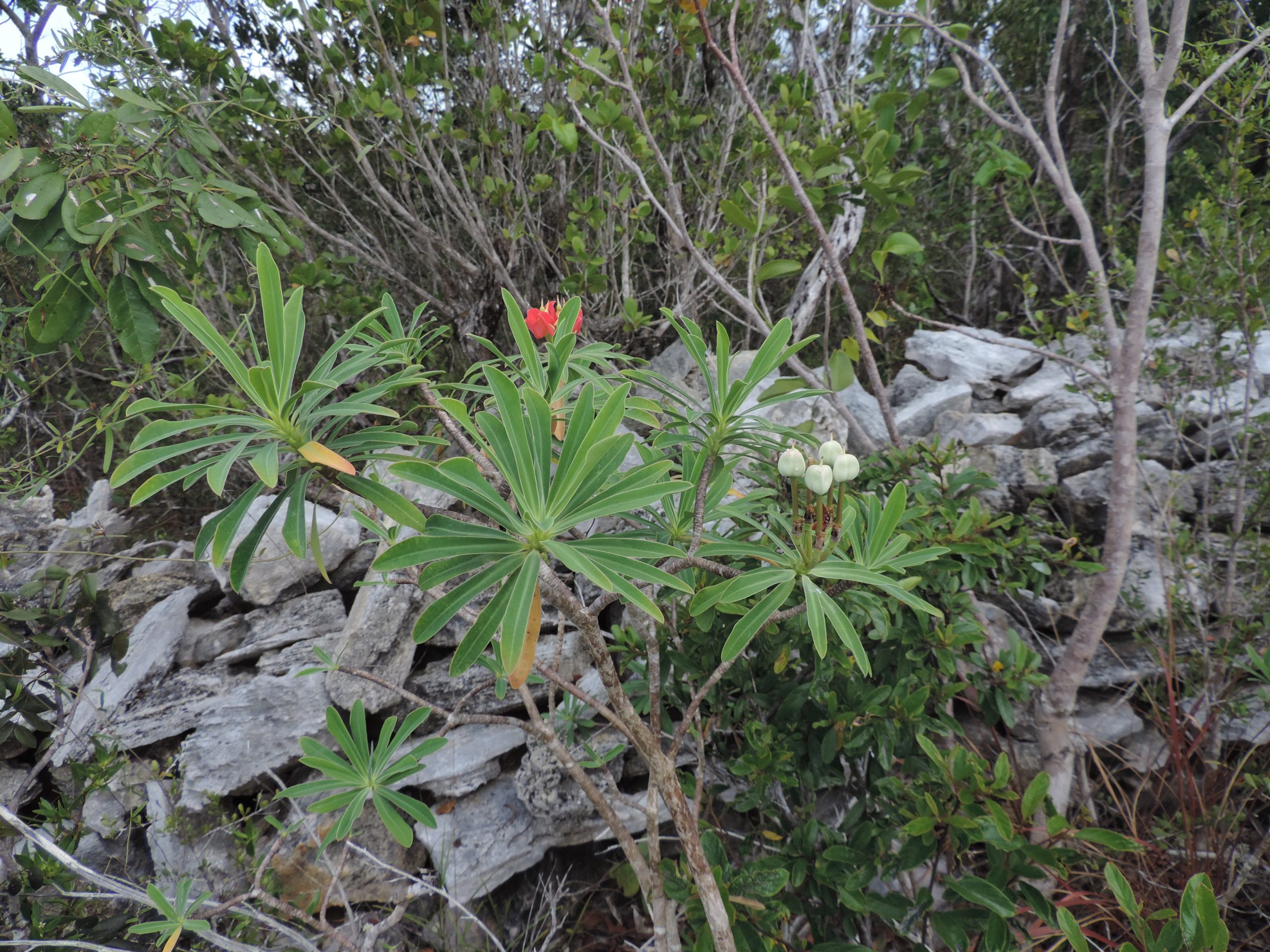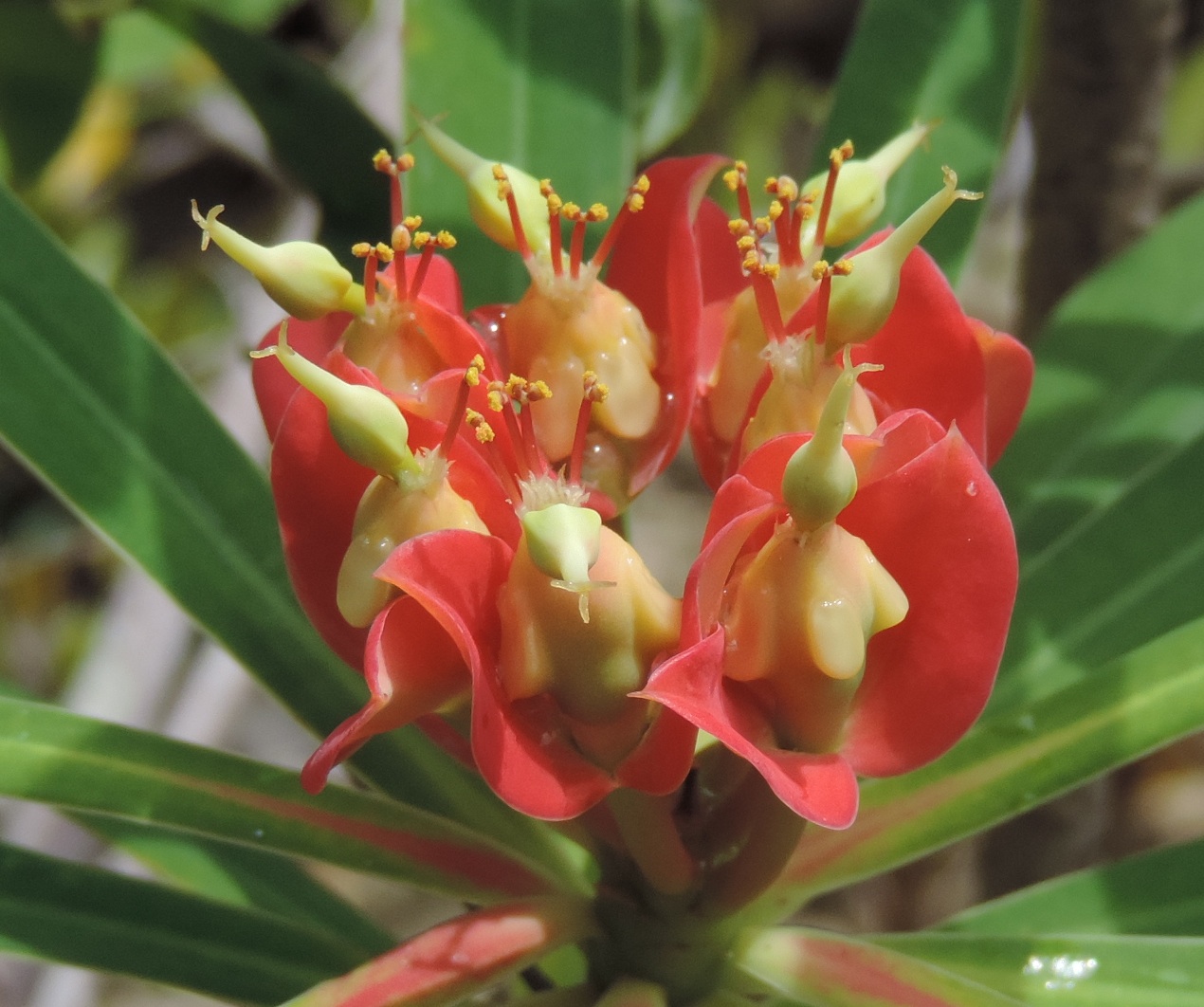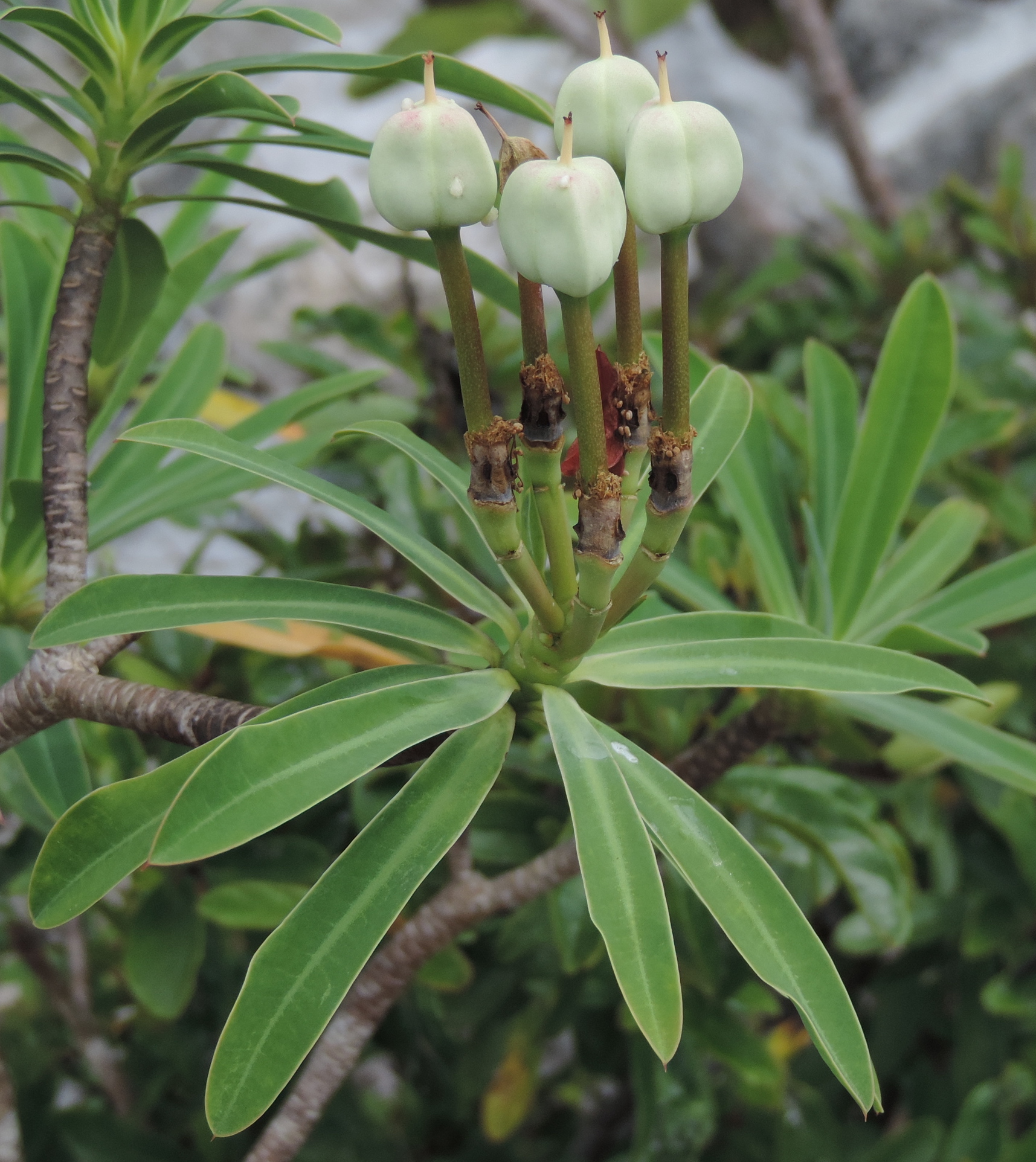Habit: Euphorbia gymnonota grows as a succulent/fleshy shrub to small tree, up to 6 m in height (typically shorter). The leaves are arranged alternate/spiraled and clustered at branch tips, up to 12 cm in length, lanceolate/linear, with an entire leaf margin and a rounded to mucronate leaf apex. At the base of the petiole are short lived stipules. The vegetation produces a thick, milky sap.
The incomplete, imperfect, monoecious, actinomorphic, flowers are arranged in clusters of cyathia and occur on branch tips. The cyathia have a staminate and carpellate phases. There are 2 bright red bracts below each cyathia. There are 5 white/yellow elongate glands on the edge of the cyathia. There is no calyx or corolla. Staminate flowers are reduced to a single stamen. Carpellate flowers are reduced to a single superior carpel, each with 3 locules and numerous seeds. The fruit is a white, erect, glabrous capsule at maturity that splits along 3 suture lines.
Habitat: Euphorbia gymnonota grows in open Dry Broadleaf Evergreen Formations – Woodland/Shrubland (scrubland coppice).
Distribution: Euphorbia gymnonota is endemic to the Lucayan Archipelago occurring in the central and southern island groupings (including the Turks and Caicos Islands).
Medicinal/Cultural/Economic usage: Euphorbia gymnonota is not known to be used medicinally in the Bahamas.
All parts of the species are extremely toxic and should not be ingested!!



